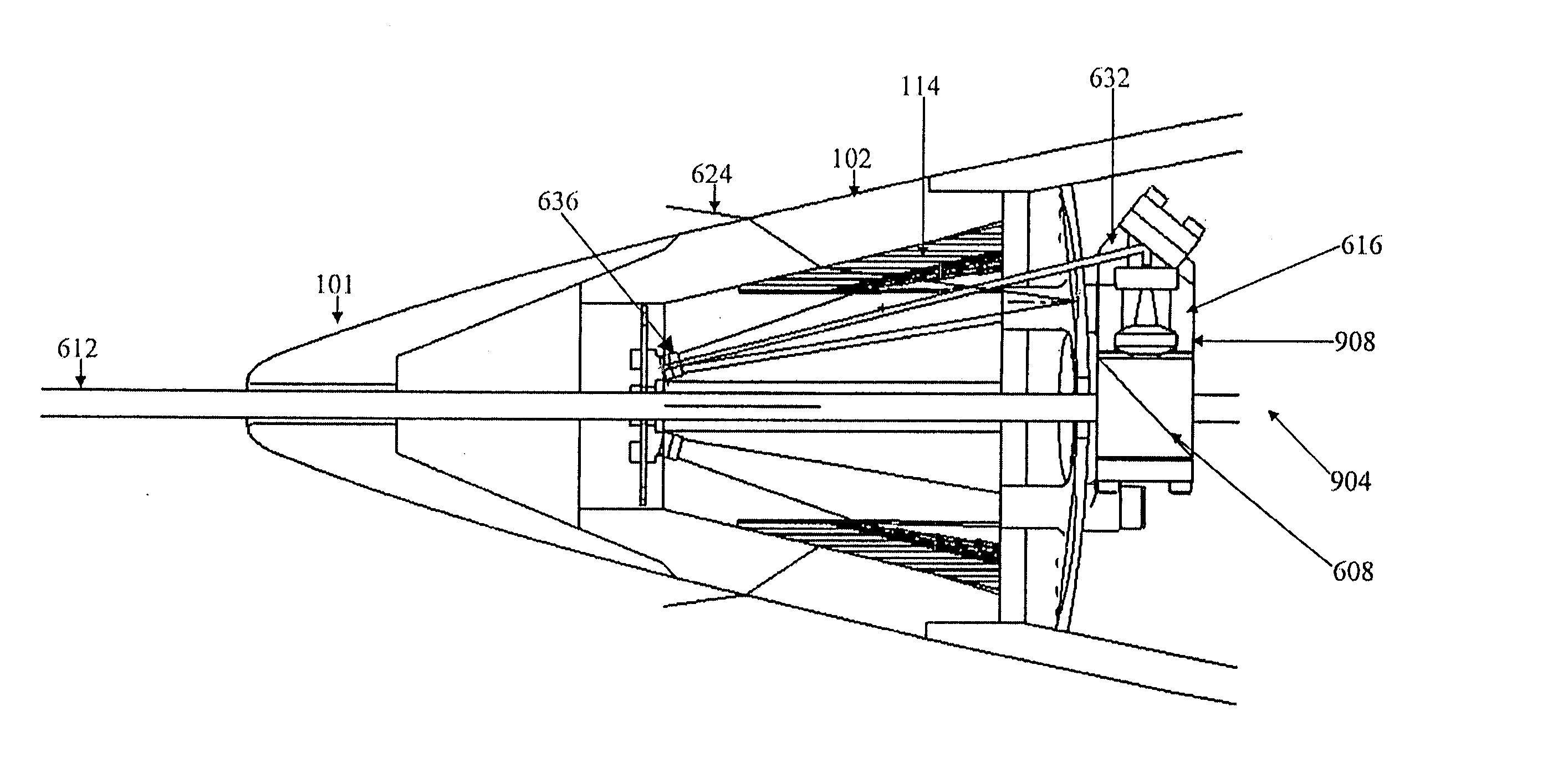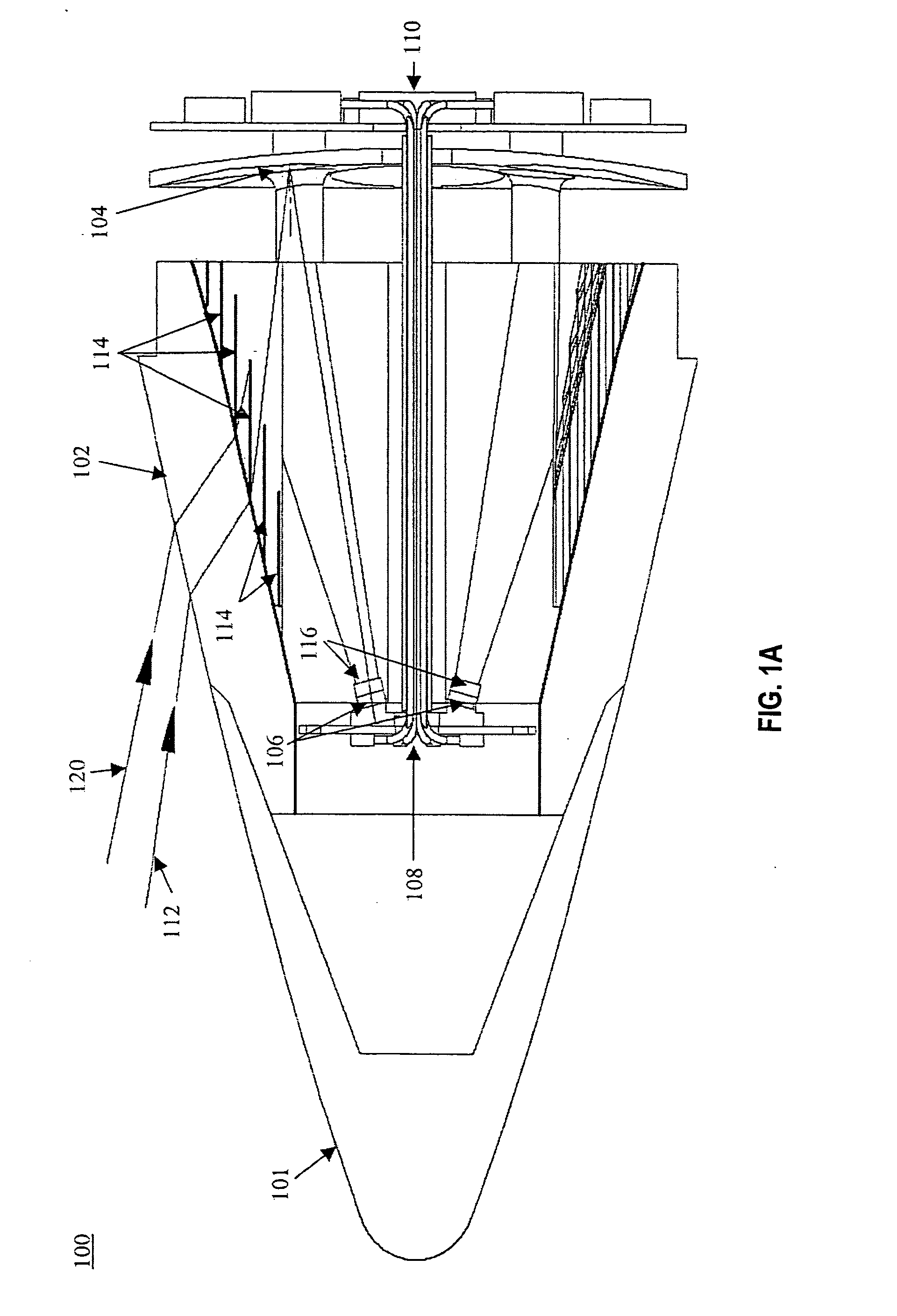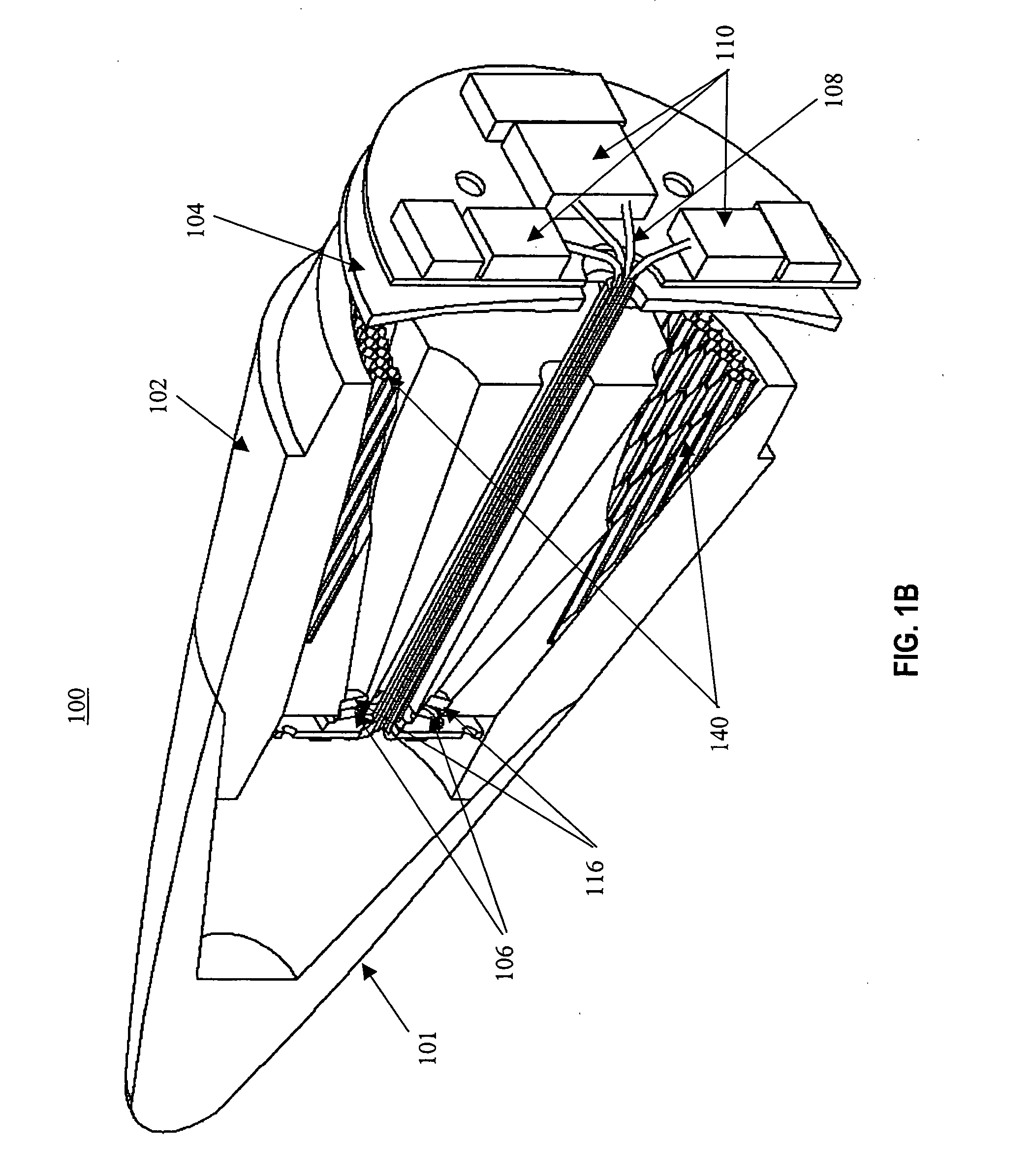Doppler tracking optical monopulse
a technology of optical monopulse and doppler, which is applied in the direction of reradiation, distance measurement, instruments, etc., can solve the problems of limited velocity of guided munition having a hemispherical radome, and problems for the detector system used
- Summary
- Abstract
- Description
- Claims
- Application Information
AI Technical Summary
Benefits of technology
Problems solved by technology
Method used
Image
Examples
Embodiment Construction
[0025] Determining both the relative direction and speed of a target can be a complicated task. One proposed method for determining the relative direction of target is disclosed in related U.S. patent application Ser. No. 10 / 729,066, a previous invention of the present inventors. A brief summary of this related art follows as it also describes the direction detection portion of the present invention.
[0026]FIG. 1A illustrates a related art direction finding system 100 for use in a guided munition. The direction finding system 100 includes a radome 101 with a receiving window system 102 that receives and transmits therethrough a radiation pulse 112, typically a laser pulse. The receiving window system 102 must be made of a material that transmits the radiation pulse 112, but can also withstand aerodynamic heating due to the velocity of the guided munition. Moreover, the receiving window system 102 must be able to withstand abrasion, such as that caused by dust or sand impacting the r...
PUM
 Login to View More
Login to View More Abstract
Description
Claims
Application Information
 Login to View More
Login to View More - R&D
- Intellectual Property
- Life Sciences
- Materials
- Tech Scout
- Unparalleled Data Quality
- Higher Quality Content
- 60% Fewer Hallucinations
Browse by: Latest US Patents, China's latest patents, Technical Efficacy Thesaurus, Application Domain, Technology Topic, Popular Technical Reports.
© 2025 PatSnap. All rights reserved.Legal|Privacy policy|Modern Slavery Act Transparency Statement|Sitemap|About US| Contact US: help@patsnap.com



